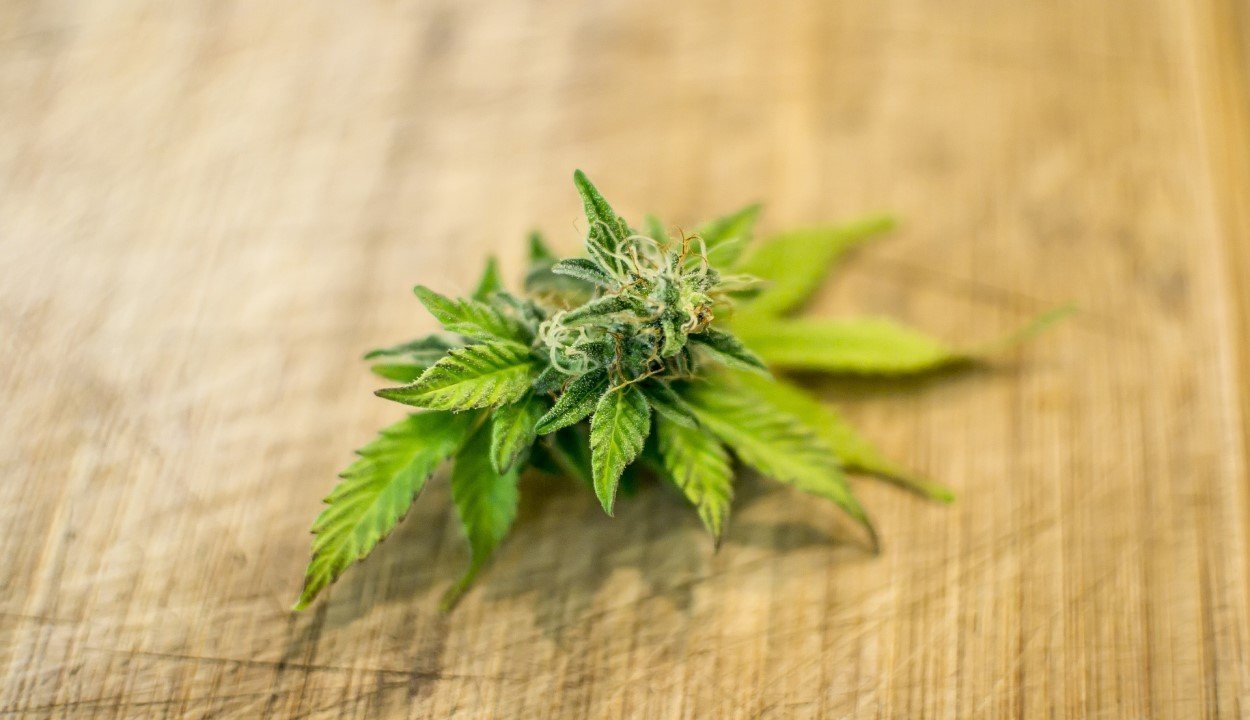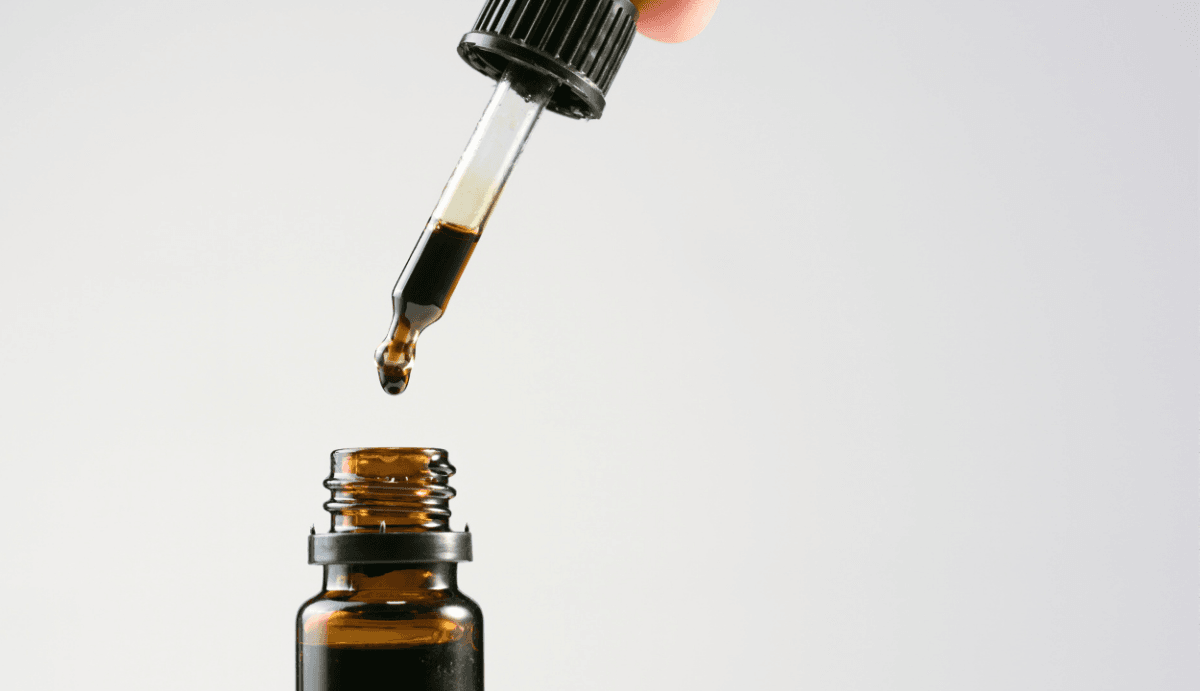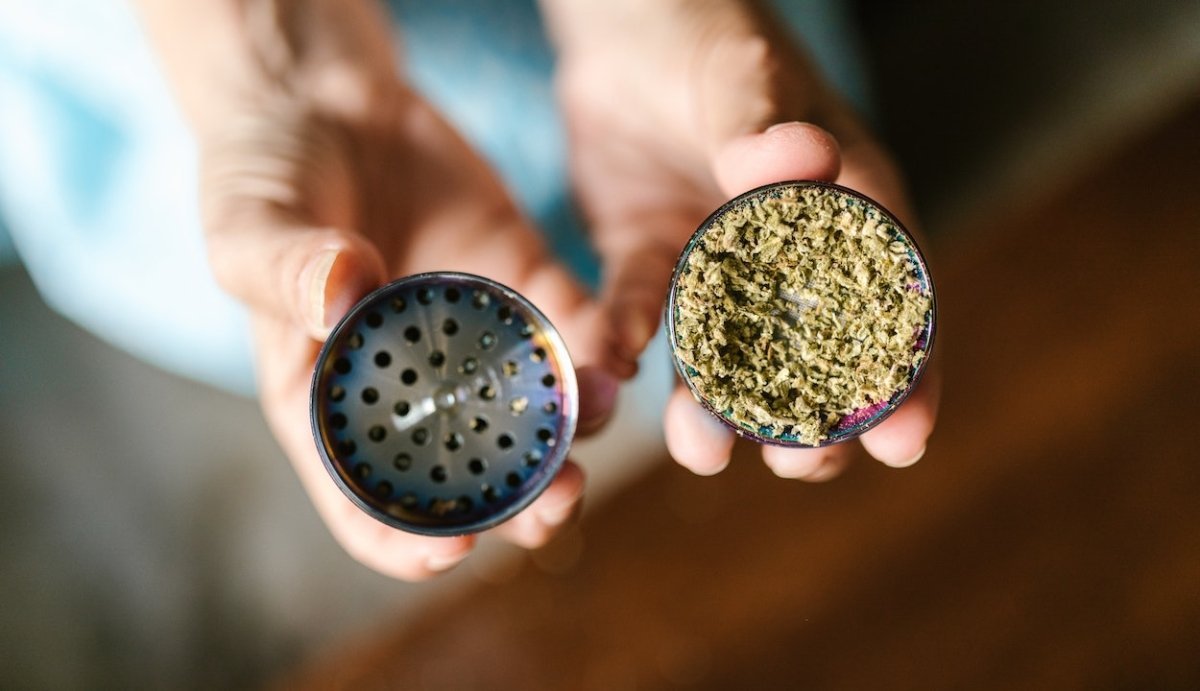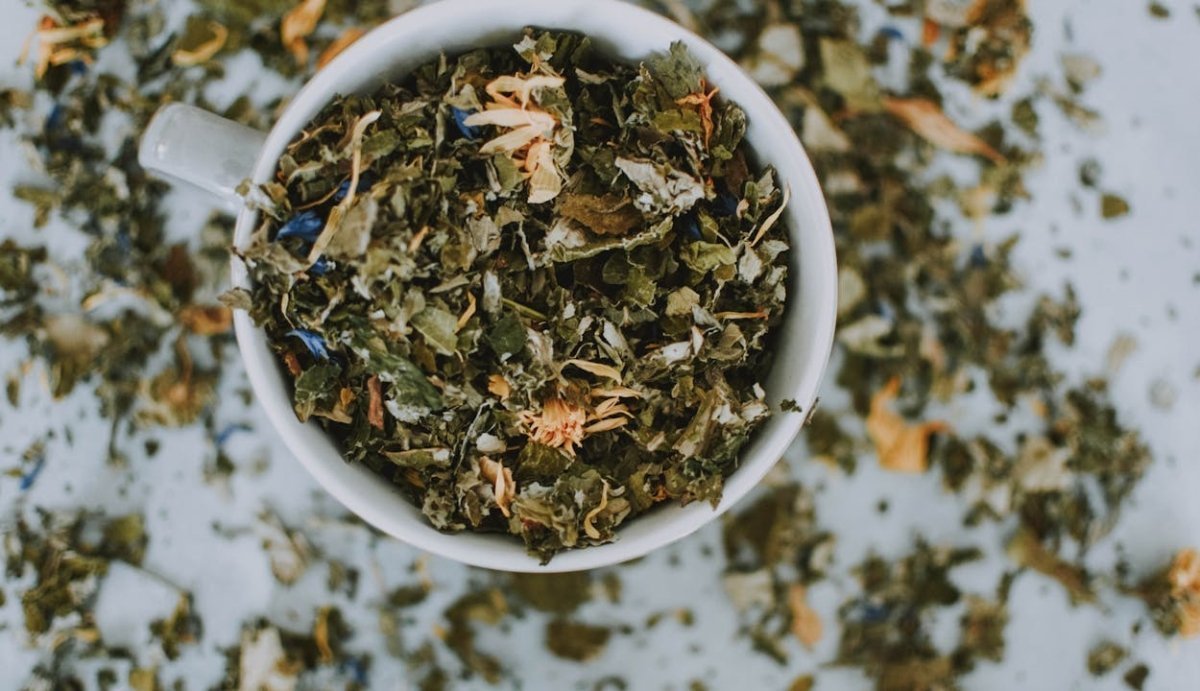Your Cart is Empty
FREE SHIPPING ON ALL ORDERS $75+
The “entourage effect” refers to a phenomenon between cannabinoids and terpenes in which the compounds work together to change each other’s effects.
Sounds confusing? Let’s back up some.
If you take a close look at a cannabis bud, you’ll find that it’s covered in fine, hair-like structures.
These tiny hairs, called trichomes, are responsible for the production of phytocannabinoids and terpenes, or the molecules that give cannabis it’s unique benefits and fragrance.
Each different plant cultivar in the cannabis family has a slightly altered phytocannabinoid and terpene profile. These differences, which start in the trichomes, are why you can sometimes identify different strains by the unique appearance of their buds.
When you consume cannabis or hemp products, you also consume hundreds of these unique plant compounds. Each cannabinoid and terpene has a unique effect on the body, and the behavior of each compound may alter the behavior of the compounds around it.
The way that cannabinoids and terpenes interact with each other is referred to as “the entourage effect.”
Because each plant cultivar has a different range and potency of cannabinoids and terpenes, the benefits of the entourage effect are not cut and dry, rather they offer a “spectrum” of actions and reactions.
The entourage effect theory is often the selling point behind full spectrum CBD products, which contain high concentrations of CBD and a varying collection of other trace cannabinoids and terpenes.
The “entourage effect” refers to a synergistic effect between cannabinoids and terpenes found in cannabis plants.
Limited research helps us understand that the benefits of the entourage effect are likely far reaching and diverse. Criticism of the entourage effect theory suggests that while the synergy between cannabis compounds may be real, we still don’t know enough to apply it to the current CBD market.
Still, the proposed benefits of the entourage effect is the main selling point behind Full Spectrum CBD products, and there is a substantial amount of anecdotal evidence supporting this.
The entourage effect may also be behind the efficacy of other products, such as isolates infused with terpenes or targeted cannabinoid combinations, like CBD products with added CBG or CBN.
Ultimately, there is a lot to learn about the entourage effect, and future research about cannabinoid and terpene synergy is expected to help shape cannabis genetic advancements and the CBD industry as we know it.
The entourage effect currently stands as a heavily-supported theory, but we don’t know enough to call it a scientific fact. That’s not to say there isn’t any supporting research.
In fact, the term “entourage effect” in relation to cannabinoids was first coined in 1998 by a group of researchers that included Raphael Mechoulam, the man who was named “the father of cannabis” after being the first to isolate CBD in 1963 and THC in 1964.
In other words, the “entourage effect” has been connected to cannabinoids for quite some time. In the previous two decades, countless research efforts have aimed at understanding the individual functions of cannabinoids and terpenes and the synergy between them.
The first use of the term “entourage effect” in 1998 was actually in reference to endocannabinoids, or the cannabinoids found naturally in the body.
Although the research didn’t actually include CBD, THC, or other cannabinoids, it did help to demonstrate the potential synergy between compounds.
This research, which was published in the European Journal of Pharmacology, found that 2-AG (a major endocannabinoid) is generally accompanied by two fatty acids that may increase its effects.
The research found that the essential fat molecules were actually “inactive”—they didn’t bind to the CB-1 and CB-2 receptors themselves—but rather potentiated the ability of 2-AG to naturally bind to receptor sites.
This knowledge of endocannabinoids led to researchers shining a new light on phytocannabinoids and other lipids found in the cannabis plant.
Now that over 100 cannabinoids and countless terpenes have been identified, researchers suspect that many active and “inactive” cannabis compounds may play a role in the differing effects of each cannabis or hemp-based product.
Initially, the entourage effect theory was aimed at the medicinal use of THC, where researchers began to suggest that the inclusion of CBD could benefit certain patients.
A study published in the Journal of Pain and Symptom Management in 2010 suggests that a combination of THC and CBD may be more effective at treating intractable cancer-related pain than THC alone.
The theory is multidimensional and suggests that CBD may modulate some of the negative effects of THC, but also that THC and other plant compounds may boost the benefits of CBD.
A 2011 review titled “Taming THC: potential cannabis synergy and phytocannabinoid-terpenoid entourage effects” by Ethan Russo aims to support this theory by suggesting that these “entourage compounds” have value as “antidotes to intoxication.”
Russo’s review extends beyond the synergy between CBD and THC. It also highlights multiple synergistic benefits observed between cannabinoids and terpenes.
The lengthy review evaluated hundreds of independent articles that help strengthen this theory, with applications that range from addiction treatment to breast cancer to inflammatory conditions and more.
Although research is still limited, other scientific reviews have aimed at identifying the interactions between cannabinoids and terpenoids (terpenes).
A 2017 paper published in Advances in Pharmacology looks at the entourage effect between THC and CBD, but also lesser-known cannabinoids and plant compounds like terpenoids.
The study highlights the dangers of overlooking these trace compounds, suggesting that they “contribute modulatory and therapeutic roles in the cannabis entourage far beyond expectations considering their modest concentrations in the plant.”
One pharmaceutical medication that relies on equal portions of CBD and THC, called Sativex, was intentionally designed to incorporate roughly 6-7% of selected terpenoids.
Some research has also identified potential therapeutic effects for the lesser-known cannabinoids that are present in full spectrum oil.
Animal studies show that CBG may have an impact on Inflammatory Bowel Disease, bladder dysfunctions, colon cancer, bacterial infections, and more.
Alternatively, research suggests that CBN may act as a sedative, and may pose benefits for sleep-related conditions.
Still, very few studies evaluate the effects of these cannabinoids when used in combination with CBD, THC, or cannabis-derived terpenes.
Understanding the full benefits of the entourage effect will take time, but more research regarding the benefits of CBD in full spectrum and CBD isolate forms is underway.
To date, there hasn’t been much criticism regarding hemp’s entourage effect. Some critics refer to the entourage effect as a marketing hoax used by manufacturers to push their full spectrum formulas. Still, no research currently exists to discredit existing research about cannabinoid and terpene synergy.
One related study was published in March of 2020, titled “The ‘entourage effect’ or ‘hodge-podge hashish’: the questionable rebranding, marketing, and expectations of cannabis polypharmacy.”
The article doesn’t aim to discredit the possibility of the entourage effect, rather it suggests that “claims of a cannabis entourage effect invoke ill-defined and unsubstantiated pharmacological activities” leading to a misrepresentation of therapeutic cannabis products.
In other words, the article simply suggests that we don’t yet know enough about the entourage effect to make definitive claims.
As you begin to understand the entourage effect of cannabis compounds, you’ll quickly see that the potential benefits are limitless and more accurately displayed as a “spectrum” than a definitive list.
Because there are many combinations that have yet to be studied, and because the activities of cannabinoids and other cannabis compounds also directly rely on each person’s unique biology, it’s safe to say that we still have a long way to go before we completely understand the proposed benefits of the entourage effect.
Still, Russo’s 2011 review “Taming THC: potential cannabis synergy and phytocannabinoid-terpenoid entourage effects” offers a lengthy list of potential benefits, particularly highlighting the effects between cannabinoids and certain terpenes.
According to Russo’s review, which is arguably the most concise and complete review of the entourage effect available to date, the entourage effect may apply to the following potential benefits associated with cannabinoids:
Given the lengthy list of CBD’s potential benefits, it’s likely that the number of potential benefits related to the entourage effect is still being underestimated.
Researchers have taken interest in understanding CBD and the way it interacts with other cannabinoids and terpenes to provide synergistic benefits, which has led to a number of different unique full spectrum, broad spectrum, and terpene-enhanced formulations.
Most commonly, you’ll hear the benefits of the entourage effect purported by manufacturers who focus their efforts on Full Spectrum CBD.
However, the entourage effect may apply to any reaction between cannabinoids and terpenes derived from cannabis, and most of the available research focuses on specific cannabinoid and terpene reactions, not whole-plant reactions.
That being said, many people still believe that true Full Spectrum formulas are the most beneficial, since they aim to offer a diverse cannabinoid and terpene profile that is similar to the natural composition of the original hemp material used in manufacturing.
Other brands have taken a step forward, arguing that targeted formulas are far more beneficial because consumers have the opportunity to choose the combinations that best meet their needs. These formulas include a specific selection of cannabinoids and terpenes chosen for their unique potential benefits.
For instance, a pure CBD extract infused with CBG may be marketed as having increased anti-inflammatory potential. CBD isolate may be infused with terpenes, which serves to add flavor and aroma to the flavorless isolate, but also help users reap the potential benefits of different terpenes and their entourage effect with CBD.
There’s no definitive answers to which approach is more beneficial, and the wide selection of CBD formulas available makes it nearly impossible to narrow down to simple rules. Each person experiences CBD differently, and the best way to find a CBD formulation that works best for you is through careful trial and error.
With more research regarding the interactions between hemp compounds underway, it’s safe to expect that we will soon understand more about how the entourage effect works.
Understanding the way that different cannabinoids and terpenes interact with each other outside and inside the body means that cannabis breeders can formulate strains to target specific ailments and benefits.
Understanding these cannabinoid and terpene interactions may also mean understanding more about the benefits of CBD when it’s isolated, leading to more accurate applications of CBD isolate products.
Better understanding of the proposed benefits of these synergistic compounds will undoubtedly help shape the future genetics of cannabis, including industrial hemp strains, full spectrum, and terpene-infused formulations.
The entourage effect is more likely to occur when using whole plant cannabis products, rather than isolated cannabinoids like CBD. Not all CBD products will give you that optimal entourage effect.
The Entourage Effect is important in cannabis medicine because it highlights the potential for a wider range of therapeutic effects than what has been previously understood from isolated compounds.
The Entourage Effect in its natural form can only be found in the cannabis plant, however, some companies are working on replicating the effect by combining isolated compounds in a lab setting.
Comments will be approved before showing up.



